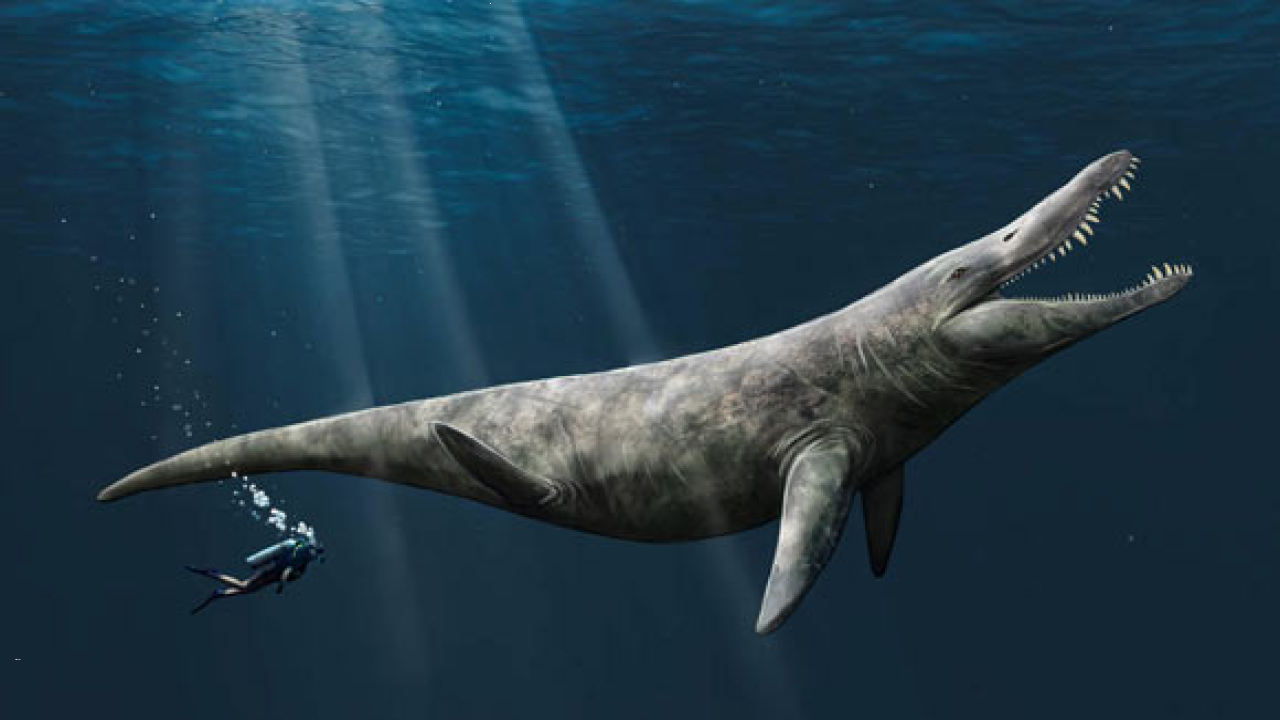Pliosaur Discovered in England
Fossil remains of a giant pilosaur was discovered in England recently. Their discovery is significant discovery due to the enormous size estimation.
Roaming the Prehistoric Seas
Pliosaurs, including their short-necked counterparts, were mainly found in the prehistoric seas of Europe. These ancient marine reptiles were well-adapted for life in the water and were built for speed compared to their long-necked cousins, the plesiosaurs. They ruled the seas between 220 and 70 million years ago, leaving a significant mark on Earth’s history.
Not Dinosaurs, but Distant Relatives
Although pliosaurs are often associated with dinosaurs, they are not classified as dinosaurs themselves. Instead, they are distant cousins of modern turtles. These remarkable reptiles had several distinctive features that set them apart from other marine creatures of their time.
A Formidable Predator
Pliosaurs were apex predators of the ancient oceans, equipped with powerful adaptations for hunting. With their four flipper-like limbs, large crocodile-like heads, and enormous teeth, they were formidable hunters. They preyed upon fish, cephalopod mollusks, and even other marine reptiles. Their massive skulls and powerful jaws allowed them to take down their prey with ease.
Controversial Claims and New Discoveries
One of the most famous pliosaurs, Liopleurodon, sparked controversy when it was claimed to be a colossal creature measuring 25 meters in length and weighing 150 tons. However, the existence of such enormous pliosaurs remains unverified. Instead, recent discoveries shed light on a different species from the Kimmeridge Clay Formation in England.
The Kimmeridge Clay Pliosaur
Paleontologists unearthed four cervical vertebrae of a pliosaur in the Kimmeridge Clay Formation in Oxfordshire, England. These specimens are notable for their size, with maximum dimensions reaching 27 cm in width, 22 cm in height, and 10 cm in length. Scaling and comparisons with other Jurassic and Cretaceous pliosaurs suggest an estimated body length ranging from 9.8 to 14.4 meters for this particular Kimmeridge Clay pliosaur.
Traces of Pliosaur Feeding Behavior
Bite marks found on ichthyosaur bones provide evidence supporting the notion that pliosaurs preyed on other marine reptiles. This suggests a predatory behavior where pliosaurs would bite their prey in half and feed on the remains. Such feeding habits showcase their dominance in the prehistoric marine ecosystem.
A Glimpse into the Past
The fossils discovered in the Kimmeridge Clay Formation provide a glimpse into the ancient world of pliosaurs. These remarkable marine reptiles, with their crocodile-like heads, powerful jaws, and imposing size, were top predators of their time. While the claims made about their immense size may be the subject of debate, the new findings offer valuable insights into the diversity and adaptations of pliosaurs that once roamed our oceans over 150 million years ago.
Month: Current Affairs - May, 2023
Category: Science & Technology Current Affairs


